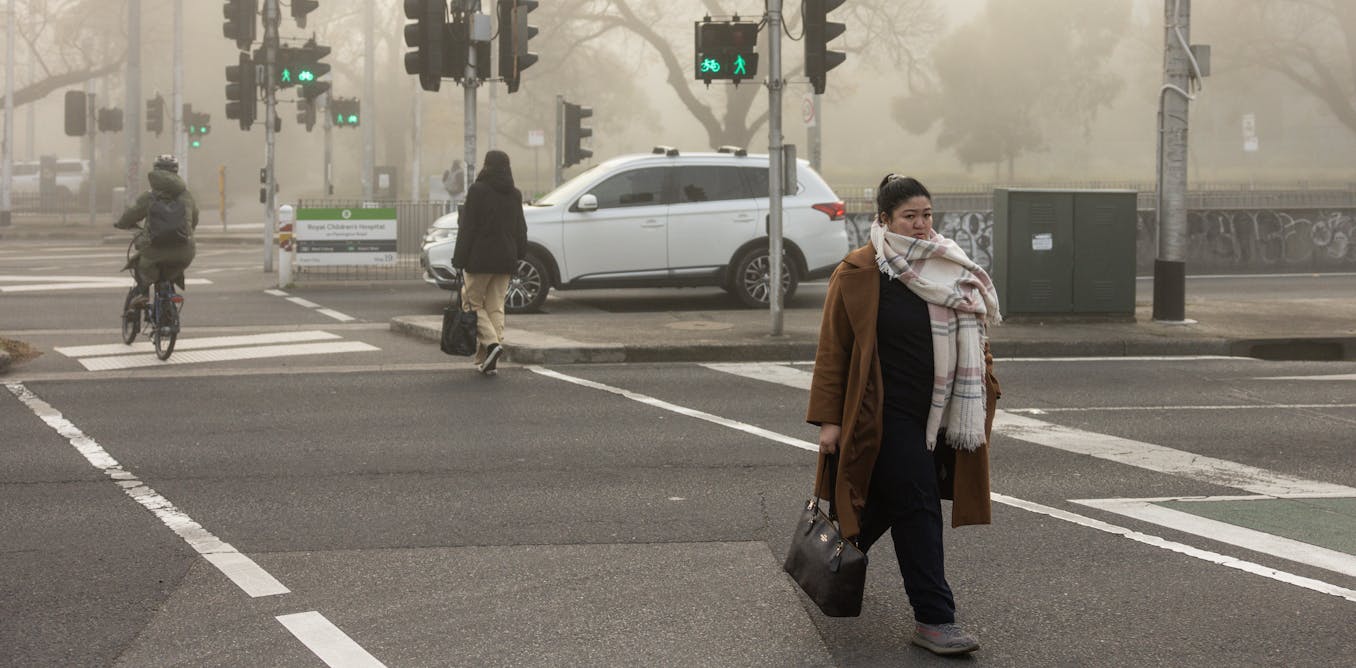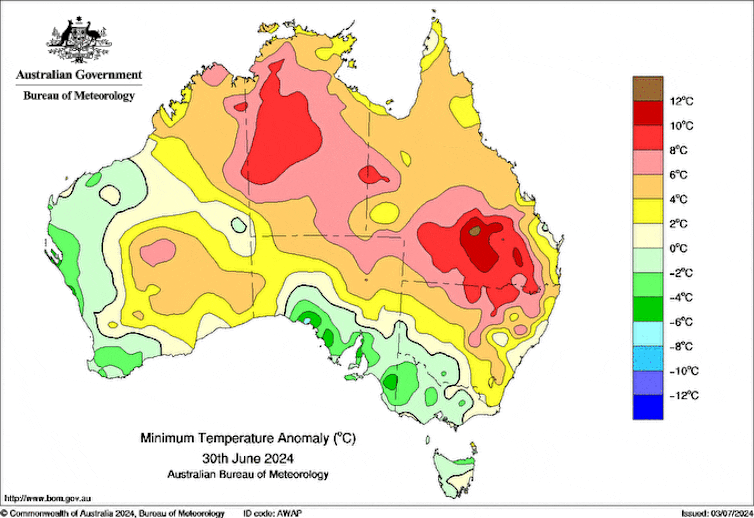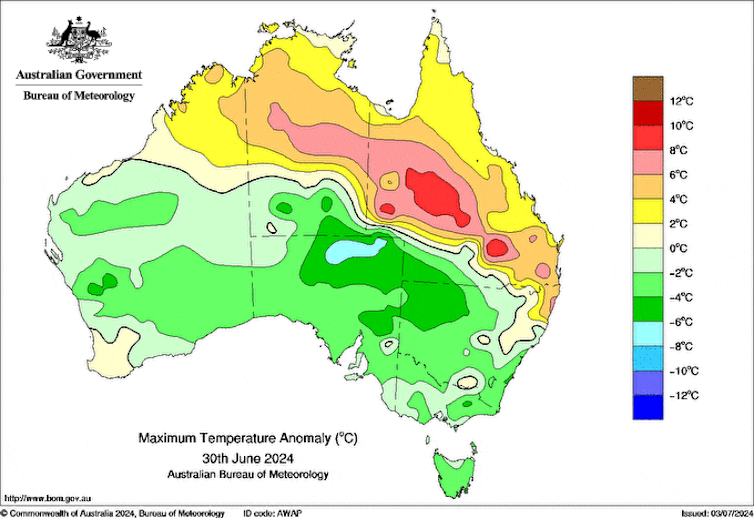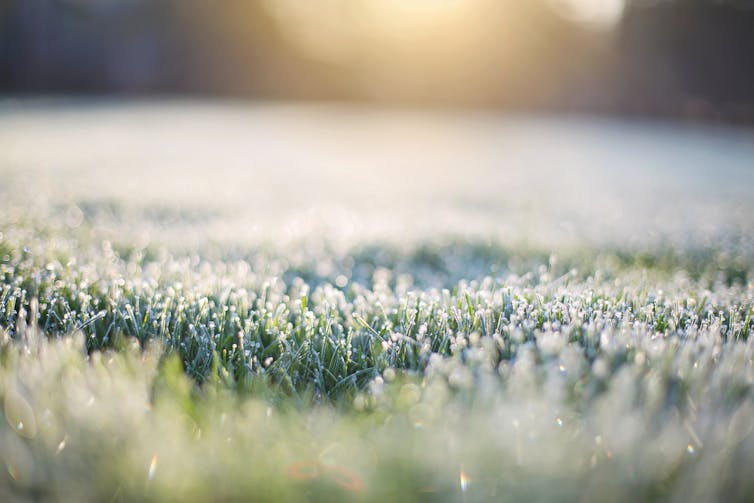
Residents of southern Australia will not have missed the cold. Frosty nights and cool days have been the weather for many of us since the beginning of July.
As winter continues, we wonder how unusual the cold is and whether we can expect several more months of it. Warmer temperatures are forecast, but winter still has a long way to go. More cold snaps could occur.
Cold weather has been prevalent across South Australia over the past few days, with temperatures dropping below zero overnight in many areas.

Office of Meteorology
Not only were the nights cold, but the maximum temperatures were also below or significantly below average in most parts of the country.

Office of Meteorology, CC BY
What causes the cold?
A persistent and strong high pressure system is hovering over southeastern Australia. The pressure was so high that it approached the Australian record of 1044.3 hPa set on 7 June 1967. An initial observation of a new record has since been ignored, but this is still an exceptional, near-record high pressure system.
This high pressure system has kept the weather dry, but clear nights have allowed the land surface to cool significantly. The long nights and short days in early July mean that temperatures struggle to rise during the day and fall quickly in the evening.
During winter, we expect cold weather and occasional cold snaps across most parts of Australia, bringing widespread frosty and icy conditions. However, the current cold weather is quite unusual and we are experiencing some record-breaking temperatures.
Notably, Tasmania recorded its lowest July temperature on record and its second lowest minimum temperature of any season: -13.5°C early Thursday morning at Liawenee in central Tasmania.
While Tasmania has the most notable records, cold conditions were unusual elsewhere too. Adelaide recorded its lowest temperature in 18 years on Wednesday morning. And many Melbourne suburbs experienced a sub-zero night and several nights of ground frost.

PxHere
Winters are getting warmer, but there are still cold spells
Given global warming, it may seem surprising that we can still break cold records. In fact, winters have become warmer across Australia. The frequency and intensity of very low temperatures has decreased in recent decades.
Additionally, many more heat records are being set than cold records in Australia and around the world. This is due to human-induced climate change. However, given the right weather conditions, cold records are still occasionally broken locally.
As the planet continues to warm, it will become increasingly difficult to set cold records, especially over larger regions or longer periods of time. While individual weather stations may still record record cold, there will not be another record cold for the global average temperature, and probably not even for the Australian average temperature.
As this week shows, we still occasionally experience daily cold records in the current climate. But it is much harder to achieve record cold months, and record cold years in any given location are almost impossible.
When we average weather conditions in different locations or over a period of time, the signal of climate change becomes clearer than the background fluctuations in the weather, making new cold records much less likely.

Office of Meteorology, CC BY
How long will this cold spell last?
South Australia is experiencing a cold snap, almost at the coldest time of the year. Shortly after the winter solstice, we will experience the longest night of the year. In parts of south-eastern Australia, we still have a few cold days and nights ahead.
Warmer conditions are forecast to return by early next week as the high pressure system moves east and the wind turns north.
The outlook for the rest of the winter clearly points to above-average daytime and nighttime temperatures. This is partly because a historical average (1981-2018) is used and warming since then means that above-average temperatures will prevail most of the time.
Australia experiences cold snaps every winter. Although the next few months are likely to be warmer than normal, we can expect a few cold days and nights at some point. If we learn to live with the cold and improve the quality of insulation in Australian homes, the winter cold snaps will seem a lot less severe.


